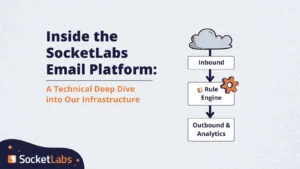What is a bounced email?
An email bounce, or email bounce back, is an email message rejected by recipient’s mail server. To maintain sender reputation and deliverability, you should replace or remove those addresses from your email list. Email bounces can be temporary (soft bounce) or permanent (hard bounce).
The bounce rate shows the number of emails rejected by receiving servers. It’s inversely proportional to the delivery rates of your email campaign. Your email service provider (ESP) should send a notification for every bounced email. The recommended bounce rate is below 1%.
Hard bounce vs Soft bounce
Hard bounce
hard bounce emails are refused emails that will not be looked at again due to an error occurring once arriving to the recipient mail server, these are permanent reasons.
Soft bounce
Soft bounce emails are just like hard bounce emails as in they get to the recipients email server and run into an issue and is rejected, however soft bounce emails aren’t permanently rejected, for reasons that are more dynamic like a full inbox, too large of file size, or another reason where the outcome can be adjusted to allow the email to pass through successfully.
Why do emails bounce?
Your email marketing campaign will inevitably have some bounced emails. Whether you should resend or remove them depends on the bounce trigger.
A soft bounce is a temporary delivery failure due to a full inbox, spam filters, or ESP or internet service provider (ISP) server issues. If you resend the email in a few days, the email deliverability problem can be corrected. If after a few attempts it still doesn’t work, your email message is considered undeliverable to that address and the address should be removed from your lists.
A hard bounce email is permanently undeliverable for these common reasons:
- The address doesn’t exist, is inactive, or has a typo
- The domain linked to that email account is no longer available
- The receiving server has blocked delivery permanently (e.g., due to several failed attempts or failed DMARC authentication).
How to lower your email bounce rate
There are a few ways to lower your email bounce rate:
-
Regularly clean email lists
-
Use opt-in lists only when sending emails
-
Remove hard bounces







